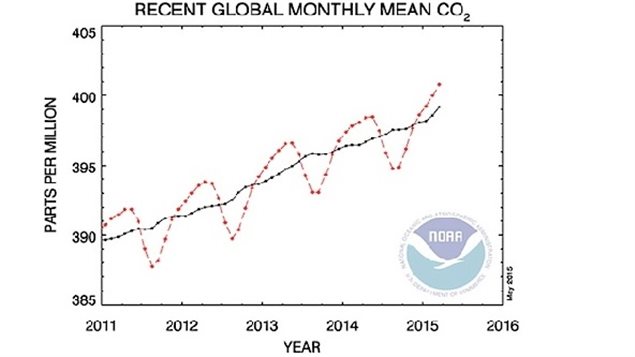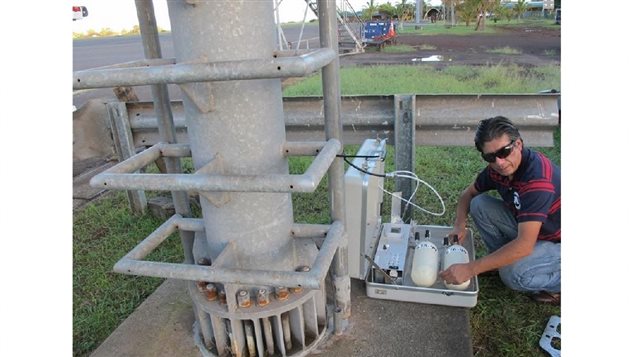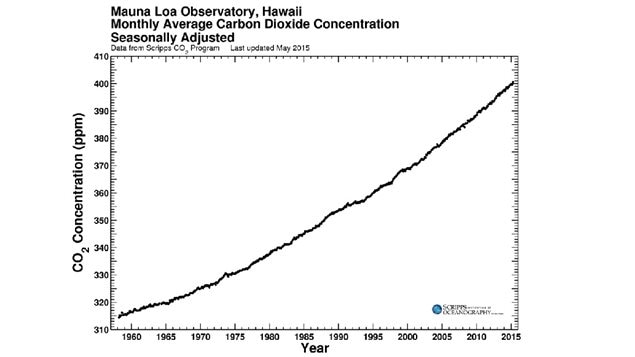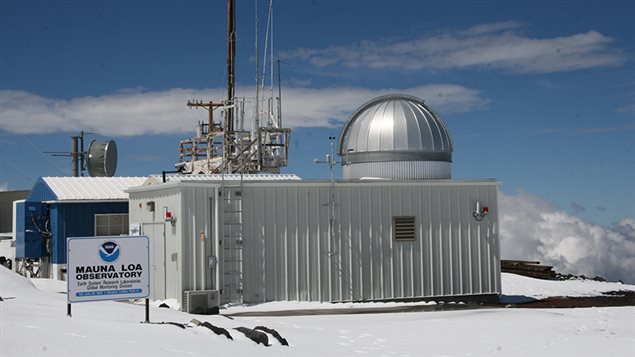For the first time the monthly level for C02 in the atmosphere, globally, has gone higher than 400 parts per million (ppm).
On the US-based National Ocean and Atmospheric Administration website, Pieter Tans, lead scientist of NOAA’s Global Greenhouse Gas Reference Network said “It was only a matter of time that we would average 400 parts per million globally. We first reported 400 ppm when all of our Arctic sites reached that value in the spring of 2012. In 2013 the record at NOAA’s Mauna Loa Observatory first crossed the 400 ppm threshold. Reaching 400 parts per million as a global average is a significant milestone.”

The NOAA bases global concentrations of C02 from samples taken at 40 different sites around the world, including the decks of cargo ships in mid-ocean and from remote islands. The testing at remote sites is deliberate in order to get a more accurate measurement, less affected by human forces as would be the case near cities for example.
The new global record was reached in March, but it was only announced last week as it takes time for the results as the samples are shipped from these far locations to the NOAA lab in Colorado.
“This marks the fact that humans burning fossil fuels have caused global carbon dioxide concentrations to rise more than 120 parts per million since pre-industrial times,” added Tans. “Half of that rise has occurred since 1980.”
“We are a society that has inadvertently chosen the double-black diamond run without having learned to ski first.” Dr. Gavin Schmidt, Climatologist and climate modeler at NASA in response to the news of record C02 level.

Scientists are concerned as the C02 level in the atmosphere has been below 300ppm for over 800,000 years. They also estimate the last time in the earth’s history that C02 levels remained over 400ppm was between three and five million years ago.
Charles Miller (PhD) is a researcher specializing in the remote sensing of carbon dioxide and other greenhouse gases; Principal investigator, Carbon in Arctic Reservoirs Vulnerability Experiment (CARVE) mission. In response to the record C02 level he said, “These increases in atmospheric CO2 are causing real, significant changes in the Earth system now, not in some distant future climate, and will continue to be felt for centuries to come. We can study these impacts to better understand the way the Earth will respond to future changes, but unless serious actions are taken immediately, we risk the next threshold being a point of no return in mankind’s unintended global-scale geoengineering experiment.

Dr. Carmen Boening Scientist, Climate Physics Group – NASA Jet Propulsion Laboratory says, “Levels that high have only been reached during the Pliocene era, when temperatures and sea level were higher. However, Earth’s climate had never had to deal with such a drastic change as the current increase, which is, therefore, likely to have unexpected implications for our environment.”

The NOAA report says even if CO2 production by humans was to be stopped, the gas remains in the atmosphere for thousands of years and the earth would continue to warm.







For reasons beyond our control, and for an undetermined period of time, our comment section is now closed. However, our social networks remain open to your contributions.